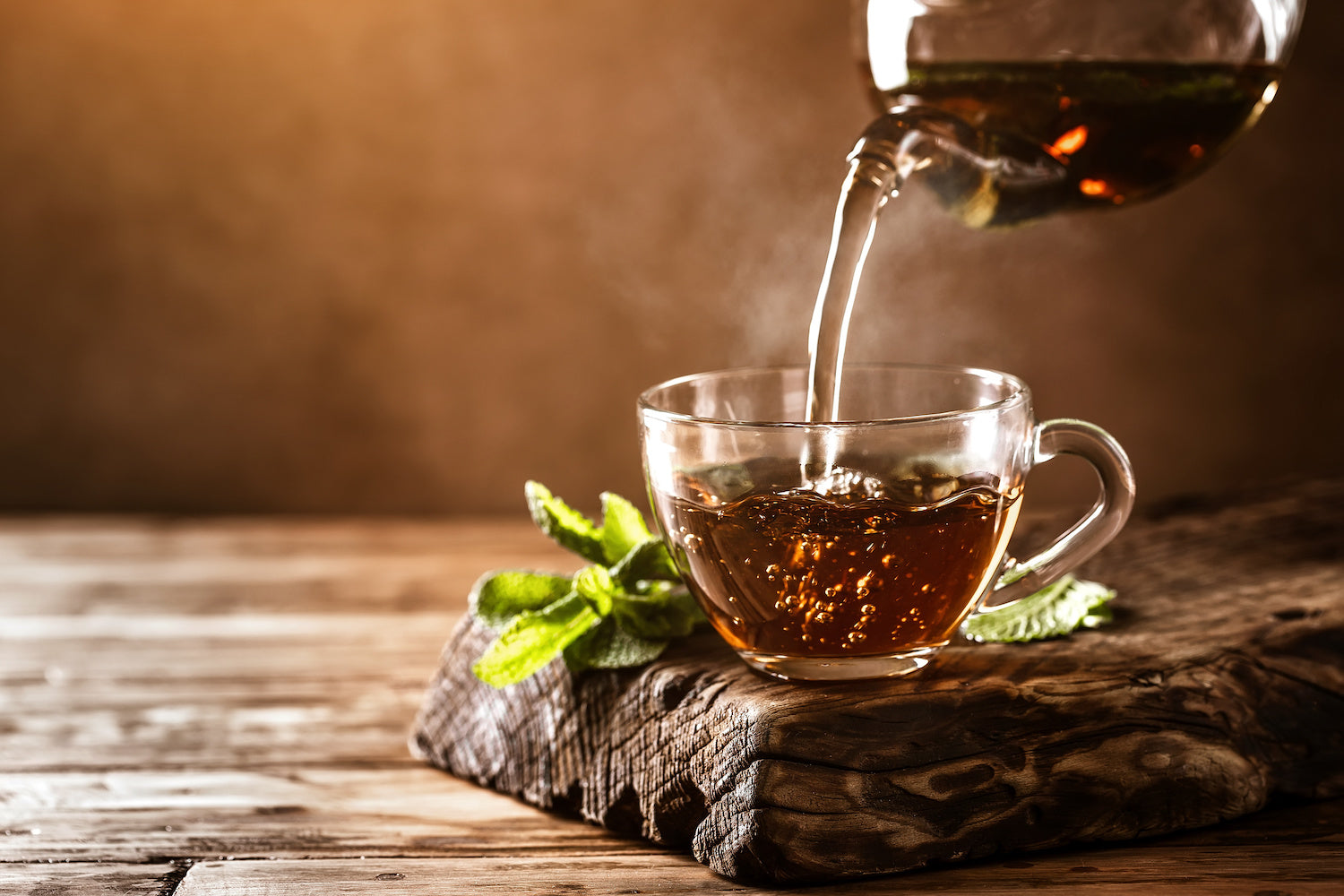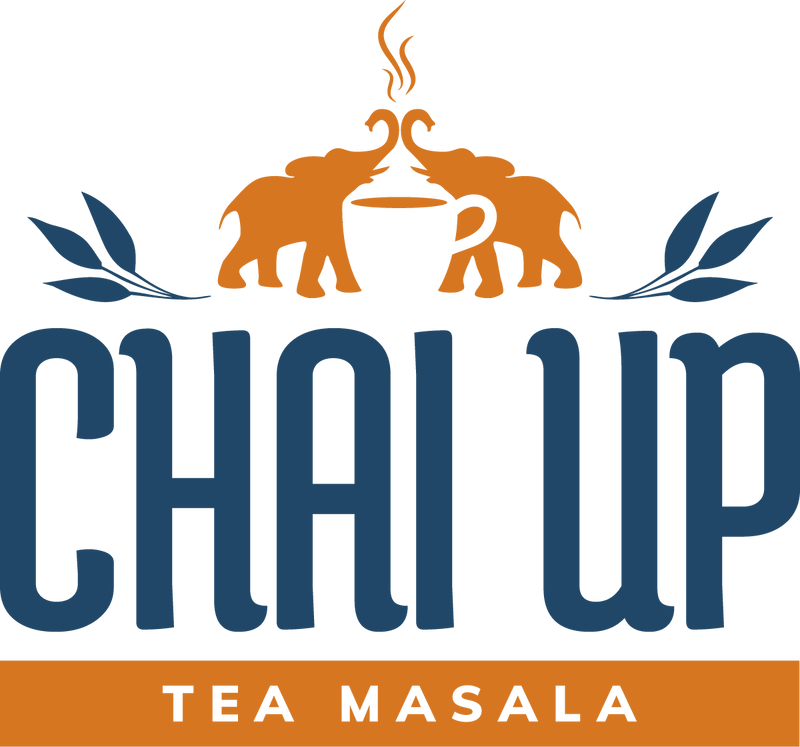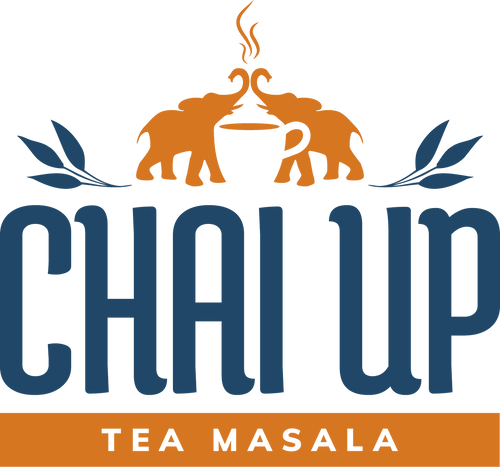Indian Tea: How It’s Made, Where It’s From, and Where To Get It
Posted on August 16 2023,

Indian tea or chai can be characterized as anything but bland and boring. It has an important role in Indian society and has become a source of income for many, an integral partner in daily discussions and household traditions, and is so much more than just a hot beverage.
Today, India is the second largest tea-producing company in the world, next to China. India produces a variety of types of tea across many regions in their country, varying in taste, flavor, and appearance depending on where tea is cultivated. Each type of Indian chai tea has its own distinct flavor and characteristics. There was even a time when India surpassed China in tea exportation which was only shortly after India started cultivating tea.
Tea is now a part of Indian culture and is a symbol of India’s rich heritage. From growing it, to preparation, and its consumption, there are inherently Indian traits to tea. In this blog, we’ll explore all the reasons why Indians love tea and how they’ve shared this important part of their culture with the rest of the world. We’ll also learn how India became one of the largest exporters of tea and everything else in between!

Indian Tea: A History
There are about 10 different tea-growing regions in India according to the Indian Tea Association. These tea-growing regions are Assam, Anamallais, Wayanad, Darjeeling, Karnataka, Dooars-Terai, Munnar, Kangra, Travancore, and Nilgiri.
170 years ago, a Scottish botanist named Robert Fortune, was tasked to act as a plant hunter, gardener, thief, and spy. China where tea originated has been dominating the industry for at least 2,000 to 5,000 years depending on your sources. It was only during the 1600s did Britain start drinking and importing tea from China with opium as their mode of trading. A Chinese emperor grew wary of this exchange because it created a surge of drug addicts in their region. The emperor then ordered all the opium to be confiscated and destroyed. Britain could not control the production of tea, nor did they want to engage in business with China, but there was still a growing demand for tea. The British knew that they would have to take matters into their own hands by cultivating tea in the region that they did control, India.
According to the Smithsonian Magazine, In 1848, Robert Fortune set out to search for plants in China. He came back, wrote, and published a travelog which prompted him to be approached by a representative of the British East India Trading Company. He was then recruited to smuggle tea from China back to India, and well, the rest is history.
Although only temporarily, in Robert Fortune’s lifetime, he was even able to witness India surpass China as the largest tea grower in the world.

The Teas In India
The British might have paved the way for India to become a powerhouse in tea manufacturing but their industry truly flourished after the British occupation. Robert Fortune, being the botanist that he is, actually also founded a similar variation of China’s Camellia Sinensis var Sinensis plant being consumed by the Singpho tribe in Assam. True enough, other botanists also confirmed Fortune’s findings and dubbed the tea that grew naturally in India Camellia Sinensis var Assamica.
Camellia Sinensis Vs Assamica
It’s important to note that there has always been a native variety of tea plants growing in India. So how does the Chinese variety differ from the tea indigenous to India? For starters, the Camellia Sinensis var Assamica plant which is indigenous to India is stronger and more robust. The Camellia Sinensis var Sinensis variety hailing from China is apparently a lot mellower and subtle. Darjeeling tea, or Indian tea grown in the Darjeeling region is the only variation of tea that uses Camellia Sinensis var Sinensis which makes it light and subtle compared to other varieties of tea.
Indian black tea is best enjoyed with milk and sweeteners which bore the famous masala chai while Chinese black tea is best enjoyed as is precisely how it is drunk in China.
Assam Tea
Assam tea or tea grown in the Assam region northeast of India was first shipped out to the UK in 1838. One year later in 1839, the Assam Company was founded which ushered in a new era in the Indian tea manufacturing industry. Assam tea is without a doubt one of the most popular types of black tea produced in the world and is regarded as the “state drink” of the region. It is described as bold, rich, and full-bodied.
According to Healthline, Assam tea has high caffeine content which makes it best taken during the mornings. It’s usually found in English or Irish breakfast tea blends. As for flavor, Assam tea could be described as malty and can even be moderately bitter on its own but this can be remedied by steeping tea for just the right amount of time.
There are also a multitude of health benefits that come with drinking Assam tea. It’s high in antioxidants which makes your immune system stronger and more impenetrable to sicknesses. Assam tea is also good for keeping your cardiovascular health in check because it can lower your cholesterol and prevent blockages from forming in your blood vessels. Some researchers even associate compounds found in black tea that can be used to treat or prevent brain illnesses.
Darjeeling Tea
Tea cultivated in the Darjeeling district in West Bengal India notably grows the Sinesis variation similar to the Chinese indigenous variation, making it a lighter strain of black tea compared to Assam and other regions. Also known as the “champagne of teas”, Darjeeling tea is usually harvested during early spring.
Darjeeling tea is harvested five times a year. The “first flush” or first harvest is made in the middle of March and the tea has a lighter color and aroma compared to the next four harvests. The second and third flush happens between June and August and the tea has a deeper color. The deepest colored harvest is during the fourth and final harvest. August is the monsoon season which also dubs the harvest during this time “monsoon tea”.
Unlike Assam tea’s bold and malty flavor profile, Darjeeling tea is known for its more fruity aroma and more precisely as experts would say, notes of citrus. While Darjeeling tea differs from Assam tea mostly in flavor, it shares similar health benefits. Darjeeling tea fights inflammation, prevents illnesses, and boosts your heart health. More than that, according to WebMD, Darjeeling could potentially fight cancer. Because of the polyphenols in Darjeeling called theaflavins and thearubigins are powerful antioxidants that protect against harmful factors that damage cells.
Nilgiri Tea
Nilgiri tea is more up-and-coming compared to Assam and Darjeeling teas. It could be characterized as something in between Assam and Darjeeling being that it is milder than Assam but more robust than Darjeeling. It’s also produced from the indigenous variation of the Camellia Sinensis var Assamica plant.
Grown and processed in the Nilgiris district in Tamil Nadu, India, has a deep amber color when steeped. Nilgiri tea has about five specific health benefits. One of them boosting immunity, similar to Assam and Darjeeling. Containing just the right amount of caffeine, Nilgiri tea can aid in keeping you fit, your metabolism running well and therefore aid in weight loss. Oral health is also something that drinking Darjeeling tea can help with, as well as maintaining bone density, and again like Assam and Darjeeling tea, is good for your cardiovascular health.
Masala Chai
Masala chai tea might not be a specific variety of tea but if India made its mark on the worldwide tea industry, it was masala chai that really put them on the map. Masala chai ingredients consist of a myriad of spices and herbs and traditionally make use of Assam black tea with milk and sweeteners. Masala chai is Indian spiced tea and the best tea leaves for chai is also Indian tea.
Each household has their own masala chai recipes. Some enjoy it with milk and some drink it without. What stays a constant characteristic of the beloved masala chai is its perfect balance of spice and sweetness. The recipe will always call from black tea, most preferably Assam black tea. It will also require a medley of spices like cardamom, ginger, cinnamon, ajwain, cloves, and others. To create the perfect spice blend, it’s required to crush all the spices into a more powdery consistency before adding to the tea. This can be very time consuming too if you’re on the go and want an authentic cup of masala chai. That’s why Chai Up created a Masala Chai Powder Mix that has 11 premium ingredients so you can cut the time brewing your tea without compromising on flavor.
Chai Up has perfected their powdered masala mix which was derived from the founders’ family recipe that has been with them for generations.

How To Make Chai From Scratch
How exactly is tea made anyway after harvesting the plants? Well, there are precisely five steps in making tea from planting it to manufacturing it for commercial consumption. We know the tea that is cultivated in different regions in India produces different yields, varieties, and flavors. Cultivation is pretty much the first step. Finding a conducive environment for tea to thrive in is important and India is abundant in healthy land and soil that allows for even indigenous tea species like the Assamica variation to thrive.
The second step to creating tea is harvesting. During the tea harvesting process, the whole plant isn’t plucked from the ground. Only the top one or two inches from the plant are harvested. The leaves from the tea plant are called flushes. Tea harvesting can be very meticulous because broken or damaged leaves are immediately discarded.
Processing the tea leaves or flushes is the third step to making tea. Depending on the type of tea you want to create, there are several different ways of processing. Some flushes are withered, burned, oxidized, or shaped. Green tea leaves in particular can’t be oxidized so they are best processed through sun drying, pan-firing, or steaming.
Other processing methods are:
- Orthodox Processing
- Whole Leaf
- Rolled and Shaped (for loose leaf tea)
- Artisan Method
- Complex Taste
- Non-Orthodox
- Shredded Leaf
- Made for commercial (tea bags)
- Machine Processing
- One Dimensional Flavor
The fifth and final stage of making tea is the brewing part we all know and love. After tea is processed, it is packed and prepped to make it on the shelves of our favorite retail stores (or online like Chai Up is!)

Why Tea Is Important To Indian Culture
According to the Times of India, there are 10 reasons why Indians love chai.
1. Tea is calming
Indian chai is the go-to drink to calm the nerves and curb some stress. Chai can sometimes even take some pain away. The usual way Indians love to enjoy tea is by adding so many healthy herbs and spices that are proven to alleviate pain and can even be an antidote to certain ailments. When you’re drinking a beverage that is good for your mind, body, and soul, there truly is nothing more calming.
2. It’s a great way to bond
Chai tea is the best way to start the morning but it’s also great for any time of the day. Whether you’re just about to start your day, winding down during the afternoon, or are in the mood for midday chit-chat with friends or family, a cup of chai along with good company is a necessity.
3. Tea can be filling
Even though Indian chai tea is just a beverage, it can be very filling. Because chai is usually served alongside food like buttered toast, different biscuits, chapati, or paratha, it makes for a great midday excuse for snacking. Not only are stomachs filled when drinking chai, but even hearts.
4. It’s the best way to entertain guests
Hospitality is big in Indian culture and the best mode of entertainment is as simple as being served chai and enjoying it amongst friends and family. The chai tea spices make it irresistible to anyone offered chai.
5. It’s never boring
There are not just a lot of Indian tea brands, but as we know now there are even different variations of tea plants across the country’s different regions. There are also many unique ways to brew and prepare tea. Masala chai might be the most known tea recipe but there are other tea recipes that make it never boring.
6. Tea matches every season
It doesn’t matter whether it’s summer, winter, or monsoon season, chai never fails to be an incessant part of everyday life. You might think drinking hot tea is counterintuitive during the summer season, but because tea is hot it triggers cooling reflexes in the body that can help bring the body’s temperature cooler. Regardless of the season, tea remains constant.
7. It uplifts the mood
Who needs to indulge in booze when you have chai? Even when it comes to celebrating, Indians prefer to drink tea over anything else.
8. Tea can clear the mind
When you’re feeling tired, overwhelmed, and your focus feels scattered, there’s nothing that calms and clears the mind better than tea. Because of an amino acid called L-theanine present in tea, drinking it helps relieve stress, it can improve your overall mood, and get your concentration back to laser focus.
9. Tea is better than coffee
You might think when it comes to caffeine wars that coffee takes the win, but when it comes to curbing the sleepiness away, tea is much better at sustaining your alertness. It doesn’t just wire you up with a boost of energy like coffee does, tea and its myriad of antioxidants keep your energy levels sustained.
10. Tea is for everyone
Indian tea is so easily accessible, available, and affordable to everyone. It’s also not just suitable for a certain age group, quite literally anyone can drink tea and enjoy it…and they do!
Indian Tea Varieties You Need To Try
The traditional Indian tea most people even outside their country enjoy is masala chai. The masala chai recipe usually calls for cardamom, cloves, ginger, cinnamon, and other spices. Because India grows the best tea leaves for chai, there are plenty of ways to enjoy them besides following the masala recipe.

How To Make Chai with Chai Up
Chai Up’s founder wanted to share their unique and delicious family recipe for masala chai and at the same time, make it easier for tea lovers out there to brew their favorite chai. The best part about the Masala Chai Powder Mix is not just how user-friendly it is for beginners, but the taste is truly impeccable. You need only a teaspoon (less or more depending on your taste) to elevate your boring cup of black tea.
Unlike other masala powders, Chai Up’s unique blend is on the milder side but still packs a lot of flavor. It is made with 11 ingredients, black cardamom seeds, green cardamom seeds, cloves, basil, ajwain, fennel seeds, ginger powder, cinnamon, oregano, and licorice plant. Now you don’t have to worry about sourcing and grinding all these separate ingredients just to make the perfect masala chai blend.
Chai Up’s Chai Tea Masala Powder Mix is also incredibly versatile. If you thought you could only enjoy it alongside a cup of black tea, you can actually even cook and bake with it! On the Chai Up website, you’ll be able to find recipes like cakes, breads, and other pastries using chai tea ingredients.
If you haven’t yet, now’s the best time to try the newest Chai Tea Masala Powder mix for yourself and see what all the hype is about!
How To Brew Masala Chai using Chai Up
For this easy and authentic chai recipe using Chai Up’s Masala Powder Mix, you’ll need only a saucepan or a teapot, water, your preferred milk and sweetener, and of course a packet of Chai Up’s Masala Powder Mix!
A 1:1 ratio of 1 cup of water and 1 tablespoon of loose-black-leaf tea can be followed. Depending on how strong you want your tea to be, you can also add additional tablespoons or bags of tea. For 1 cup of water, about ¼ cup of milk would be sufficient (which should be added last) and you can also decide on how much sweetener you want to add. You can even enjoy this recipe with or without milk and sugar. For a cup of water, 1 teaspoon of Chai Up’s masala chai powder mix is recommended. If you’re afraid of the amount, you can also put less, or if you want to turn the spice up, you can add more masala powder by the teaspoonful.



0 comments